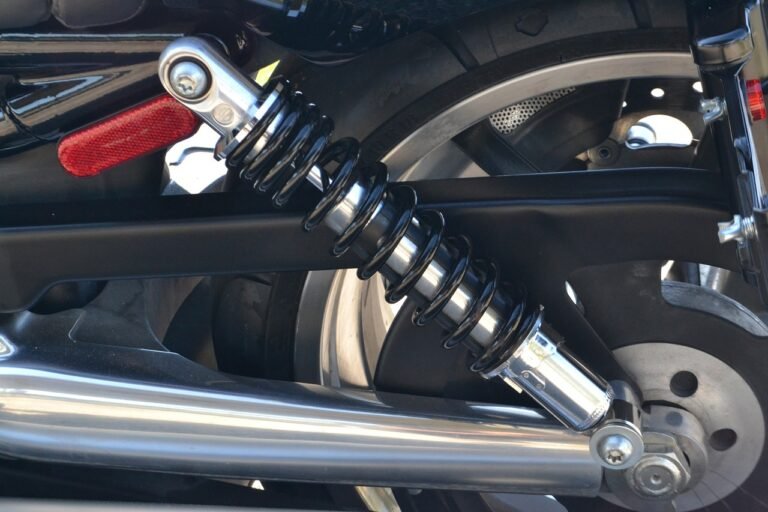Can I Use Regular Motor Oil To Lubricate My Bike Chain?
You may be wondering if it’s possible to use regular motor oil to lubricate your bike chain. While it may seem like a convenient and cost-effective solution, using regular motor oil on your bike chain may not be the best idea. In this article, we will explore the potential risks and drawbacks of using regular motor oil, as well as the alternatives that are specifically designed to keep your bike chain running smoothly and efficiently. So, let’s dive in and find out what’s best for your beloved bike!
What type of lubricant is best for bike chains?
When it comes to maintaining your bike’s chain, using the right lubricant is crucial. A well-lubricated chain not only ensures smooth and efficient pedaling but also helps prevent wear and prolong the lifespan of your bike’s components. In this article, we will explore the importance of lubricating bike chains, discuss the different types of lubricants available, and provide guidelines for proper chain lubrication.
Importance of lubricating bike chains
Lubricating your bike chain on a regular basis is essential for keeping your bike running smoothly. The primary purpose of lubrication is to reduce friction between the chain’s metal components, thereby preventing excessive wear and tear. By ensuring that the chain moves freely and smoothly, lubrication also reduces the risk of chain skipping or getting stuck, which can lead to accidents. Furthermore, a lubricated chain helps to repel moisture and prevent the formation of rust on the metal surfaces. In summary, proper chain lubrication is vital for optimal performance, durability, and safety of your bike.
Types of lubricants for bike chains
When it comes to choosing a lubricant for your bike chain, you will come across a variety of options. The most commonly used lubricants include regular motor oil, bike-specific chain lubricants, and wax-based chain lubricants. Each type has its own advantages and considerations, and your choice ultimately depends on factors such as riding conditions, personal preference, and budget.
Regular motor oil vs. bike chain lubricant
Regular motor oil, which is commonly found in households, is often considered as a potential alternative to bike-specific chain lubricants. Let’s compare these two options based on several key factors to determine which one may be more suitable for your bike chain.
Composition and viscosity
Regular motor oil is composed of a mixture of base oils and additives, designed to lubricate car engines and withstand high temperatures and pressures. In comparison, bike chain lubricants are specifically formulated to provide optimal lubrication for bike chains, with different viscosities available for various riding conditions.
Compatibility with bike chain materials
Bike chains are typically made of steel or alloys, and some lubricants may not be suitable for certain chain materials. While regular motor oil is generally compatible with steel chains, it may not be as effective for chains made from more delicate alloys. On the other hand, bike-specific chain lubricants are designed to be compatible with a wide range of chain materials, ensuring maximum protection and performance.
Effectiveness in reducing friction
Both regular motor oil and bike chain lubricants serve the purpose of reducing friction between the chain’s moving parts. However, bike-specific lubricants often have special additives that enhance their ability to form a long-lasting protective film, resulting in superior friction reduction and smoother operation, especially under demanding riding conditions.
Residual oil and dirt accumulation
One aspect to consider when choosing a lubricant is its tendency to attract dirt and debris, which can lead to a buildup of grime and cause increased wear on the chain. Regular motor oil is known to leave behind a more noticeable residue which can attract dirt. Bike-specific chain lubricants, on the other hand, are often formulated to minimize dirt accumulation, helping to keep your chain cleaner for longer.
Impact on chain performance and durability
Ultimately, the goal of lubricating your bike chain is to optimize its performance and increase its longevity. While regular motor oil can provide some level of lubrication, bike-specific chain lubricants are specifically designed to meet the unique requirements of bike chains, enhancing their overall performance and extending their lifespan.

Benefits and drawbacks of using regular motor oil
Using regular motor oil as a substitute for bike chain lubricants may seem tempting due to its widespread availability and cost-effectiveness. Let’s delve into the advantages and potential drawbacks of using regular motor oil to lubricate your bike chain.
Cost-effectiveness
One of the primary advantages of using regular motor oil is its affordability. Since most households already have motor oil readily available, it can be a convenient and cost-effective option for those on a tight budget.
Widespread availability
Regular motor oil can be found in almost any automotive store, making it easily accessible for bike riders who need a quick solution. This accessibility can be particularly advantageous when you need to lubricate your chain urgently.
Ease of application
Applying regular motor oil to your bike chain is a relatively straightforward process. With a simple drip bottle or a clean rag, you can easily coat the chain with motor oil without any specialized tools or techniques.
Potential negative consequences
While regular motor oil may seem like a convenient option, it does come with potential drawbacks. As mentioned earlier, motor oil tends to leave behind a noticeable residue, which can attract dirt and grime. This buildup can affect the performance of your chain, potentially leading to increased wear and reduced efficiency. Additionally, the viscosity of motor oil may not be ideally suited for bike chains, especially under extreme riding conditions.
Alternative uses for regular motor oil
Instead of using regular motor oil for your bike chain, consider repurposing it for other household needs, such as lubricating door hinges or preventing rust on garden tools. This way, you can make use of the oil while still ensuring optimal performance for your bike chain by using a lubricant specifically designed for that purpose.
Recommended lubricants for bike chains
While regular motor oil may not be the ideal choice for lubricating your bike chain, there are various alternatives that are specifically formulated for this purpose. Let’s explore some of the recommended lubricants for bike chains:
Bike-specific chain lubricants
Bike-specific chain lubricants are specially formulated to provide superior lubrication and protection for your bike chain. They come in different types, such as dry, wet, or ceramic lubes, each suited for specific riding conditions. These lubes often have low viscosities, allowing them to penetrate the chain’s moving parts and form a protective coating that reduces friction and repels dirt.
Wax-based chain lubricants
Wax-based chain lubricants offer a unique alternative to conventional oil-based lubes. These lubes typically come in a solid form and are applied to the chain by melting the wax and allowing it to penetrate the chain’s links. Once cooled, the wax forms a dry, clean, and long-lasting coating on the chain, offering excellent friction reduction and minimal dirt accumulation. While wax-based lubes can be more time-consuming to apply, their benefits are worth considering, especially for riders who prefer a clean and low-maintenance solution.
Dry vs. wet chain lubricants
The choice between dry and wet chain lubricants depends primarily on the weather and riding conditions you frequently encounter. Dry lubes are designed to repel dirt and are ideal for riding in dry conditions. Wet lubes, on the other hand, are more resistant to washing off in wet conditions and provide better protection against rust and corrosion. It is important to note that wet lubes tend to attract more dirt, so regular cleaning and reapplication may be necessary.
Considerations for different riding conditions
When selecting a lubricant for your bike chain, it is essential to consider the specific riding conditions you will be facing. If you frequently ride in dusty or muddy environments, opt for lubes with properties that repel dirt and ensure smooth operation even in these conditions. Conversely, if you often ride in wet or humid climates, choose lubes that are water-resistant and provide excellent protection against rust and corrosion.

Proper bike chain lubrication process
Now that we have discussed the different types of lubricants available, let’s delve into the proper process of lubricating your bike chain. Proper lubrication ensures that the chain operates smoothly and reduces the risk of accelerated wear or chain-related issues.
Cleaning the chain
Before applying any lubricant, it is crucial to clean your bike chain thoroughly. Use a degreaser or a chain cleaning tool to remove any dirt, grime, or old lube buildup. This step ensures optimal performance and allows the new lubricant to adhere properly to the chain’s surfaces.
Applying the lubricant
Once your chain is clean and dry, it is time to apply the lubricant. Depending on the type of lube you choose, follow the manufacturer’s instructions on the specific application method. In general, it is recommended to apply the lube to the inner side of the chain while backpedaling, allowing the lubricant to penetrate all the moving parts efficiently.
Removing excess lubricant
After applying the lubricant, it is important to remove any excess to avoid attracting excessive dirt and grime. Gently wipe down the chain using a clean cloth or rag, ensuring that only a thin layer of lubricant remains. This step helps to prevent buildup and maintain optimal chain performance.
Regular maintenance and reapplication
Chain lubrication is not a one-time task. To ensure your chain remains in peak condition, regular maintenance and reapplication of lubricant are necessary. The frequency of maintenance depends on various factors such as riding conditions, distance covered, and riding intensity. Regularly inspect your chain and reapply lubricant when necessary to keep it properly lubricated and protected.
Common misconceptions about bike chain lubrication
Now, let’s address some common misconceptions regarding bike chain lubrication:
More lubricant equals better performance
The belief that applying more lubricant will improve performance is simply not true. In fact, over-lubricating your chain can have adverse effects, such as attracting excessive dirt and leading to increased wear. It is important to follow the manufacturer’s instructions and use the appropriate amount of lubricant for optimal results.
Lubricating frequency and over-lubrication
The frequency of lubrication depends on various factors such as riding conditions and mileage. While it is important to keep your chain properly lubricated, over-lubricating can cause a buildup of grime and reduce the effectiveness of the lubricant. Regular inspections and reapplication when necessary are key to maintaining the ideal balance.
Mixing different types of lubricants
Mixing different types of lubricants can potentially lead to adverse effects on your chain’s performance. It is best to stick to a single type of lubricant and ensure proper cleaning before switching to a different one. This allows the new lubricant to adhere properly and deliver optimal performance.
Using household products as lubricants
Using household products such as cooking oil, WD-40, or other similar substances as chain lubricants is not recommended. These products may not provide adequate lubrication and can attract dirt and grime, compromising the performance and lifespan of your chain. It is always best to use lubricants specifically formulated for bike chains.
Factors affecting bike chain lubrication
Several factors can impact the effectiveness of bike chain lubrication. Understanding these factors can help you make informed decisions regarding your lubrication strategy.
Weather and environmental conditions
Different weather and environmental conditions require different types of lubricants. Dry, dusty conditions may call for dry lubes that repel dirt, while wet or humid conditions may require wet lubes that offer better water resistance. Consider the conditions you ride in most frequently when selecting a lubricant.
Type and quality of bike chain
The type and quality of your bike chain can also affect the choice of lubricant. Different chains may have varying materials and coatings, and using a lubricant that is not compatible with your particular chain may lead to subpar performance or accelerated wear. Consult your bike manufacturer’s recommendations for the best lubricant options.
Riding style and intensity
Your riding style and intensity can impact the wear and tear on your chain. Aggressive, high-intensity riding may require more frequent lubrication to ensure optimal performance and protection. Consider adjusting your lubrication schedule based on your riding habits.
Distance covered and frequency of use
The distance covered and frequency of use also play a role in determining the frequency of lubrication. If you ride frequently or cover long distances, more regular maintenance and lubrication may be necessary to keep your chain in peak condition.
Troubleshooting chain lubrication issues
Even with proper lubrication, you may still encounter some common issues related to chain performance. Here are some troubleshooting tips to address these problems:
Chain squeaking or making noise
If your chain is squeaking or making noise, it may be an indication of insufficient lubrication or a buildup of dirt and grime. Begin by cleaning the chain thoroughly and applying the appropriate lubricant. Ensure that the chain is properly lubricated and wiped clean of any excess.
Excessive chain wear and stretching
Excessive chain wear and stretching can occur due to a lack of lubrication or using an inappropriate lubricant. Regularly inspect your chain for signs of wear and replace it when necessary. Proper lubrication and maintenance can help prevent premature wear and stretching.
Excessive dirt or grime accumulation
If you notice excessive dirt or grime accumulation on your chain, it may be a result of using lubricants that attract dirt or not cleaning the chain effectively. Opt for lubricants that repel dirt and ensure proper cleaning before applying fresh lubricant.
Lubricant drying or not providing sufficient protection
If your lubricant seems to dry quickly or fails to provide sufficient protection, it could be due to various factors such as weather conditions, the quality of the lubricant, or insufficient application. Consider using a different type or brand of lubricant, or adjust your lubrication schedule to accommodate for the specific conditions you ride in.
Expert recommendations and opinions
While it’s always beneficial to gather insights and recommendations from experienced individuals, it is important to note that opinions may vary. Here are some suggestions from bike manufacturers, experienced cyclists, and professional mechanics:
Bike manufacturers’ recommendations
Refer to your bike’s user manual or consult the manufacturer’s website for specific recommendations regarding chain lubrication. Bike manufacturers often provide valuable insights into the best lubrication practices for their specific models.
Experienced cyclists’ insights
Experienced cyclists can offer valuable tips based on personal experiences. Engage with cycling communities, join forums, or participate in local group rides to discuss lubrication techniques and gain insights from fellow cyclists.
Tips from professional mechanics
Professional bike mechanics have extensive knowledge and hands-on experience with bike maintenance. Seek their advice and ask for specific recommendations based on your riding style, bike type, and environmental conditions. They can provide valuable guidance on choosing the appropriate lubricant and maintaining your chain for optimal performance.
Conclusion
Choosing the right lubricant and following proper lubrication techniques are crucial for maintaining the performance, durability, and longevity of your bike chain. While regular motor oil may seem like a convenient and affordable option, it may not provide the same level of protection and performance as bike-specific chain lubricants. Consider the specific riding conditions, weather, and environmental factors you encounter, and choose a lubricant that best suits your needs. Regular cleaning and maintenance, along with the appropriate lubrication frequency, will help ensure your chain operates smoothly and efficiently, enhancing your overall cycling experience. Remember to consult manufacturer recommendations and seek advice from experienced cyclists and professional mechanics to optimize your chain’s performance. Happy cycling!




